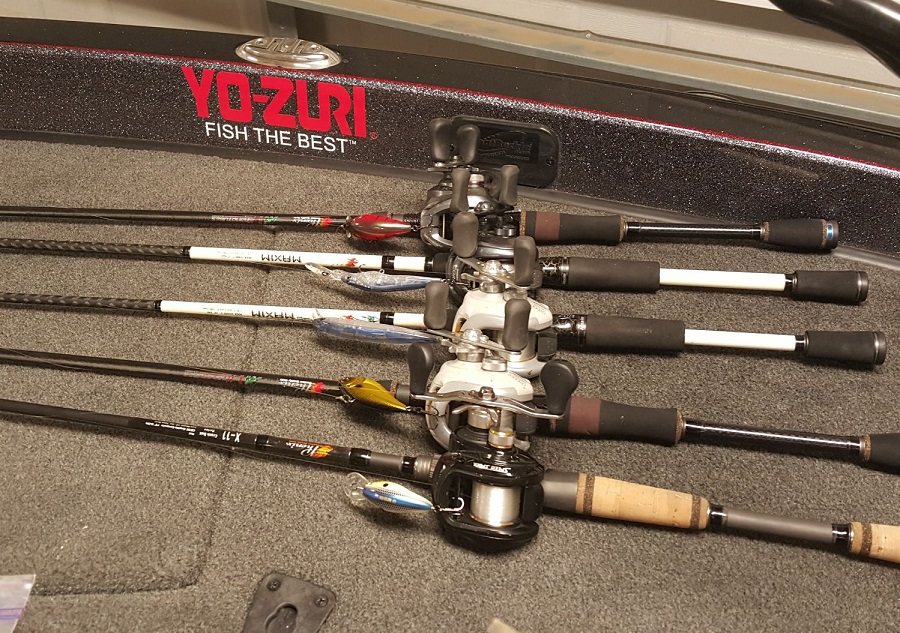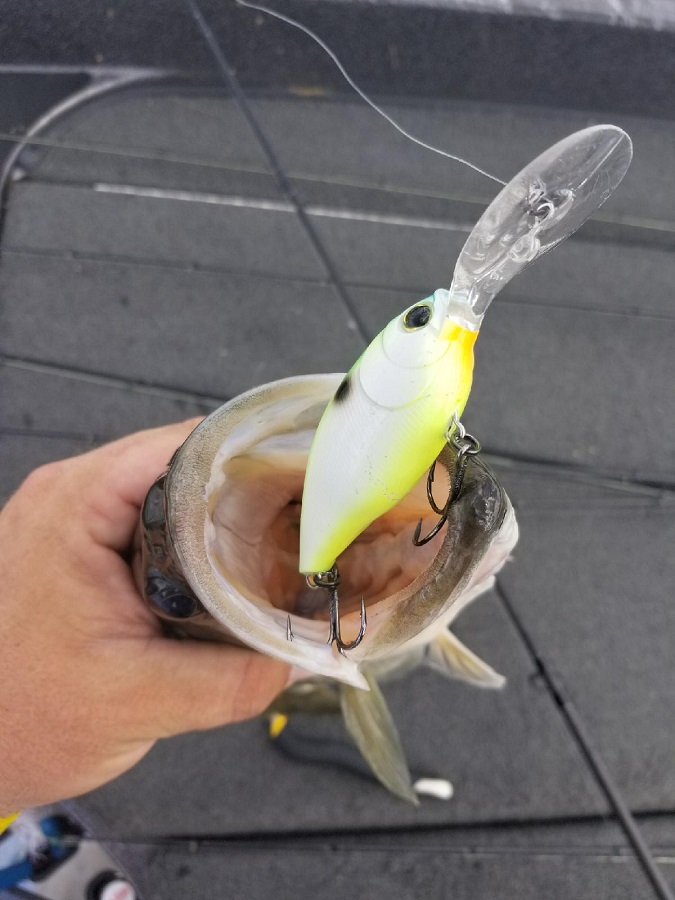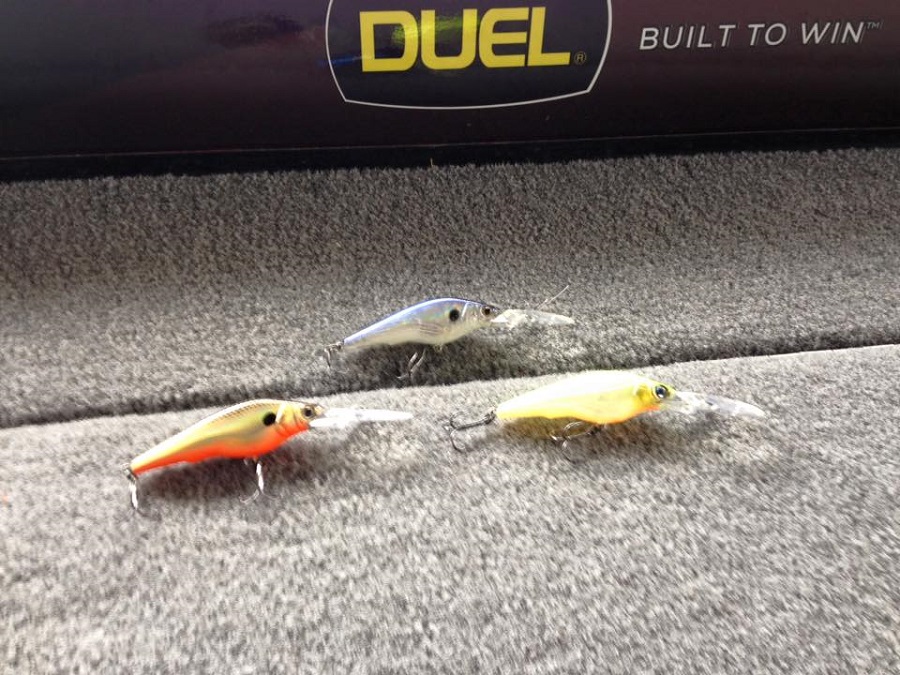
Fishing line is one of the most vital parts of fishing success. It is after all what connects you to the fish. Line also plays a huge role in the action and diving depths when it comes to crankbait fishing.
FLW Tour pros Braxton Setzer and Brandon Cobb weigh in on how they choose the right line type and size for different crankbaits.
 Selecting the Right Pound Line Test
Selecting the Right Pound Line Test
One of the simplest ways to get your crankbait to dive deeper is to use lighter line. It is a simple fact that the smaller diameter line will have less drag and let the bait get down deeper.
“The difference between a 10-pound and 8-pound line is not drastic, but it can make all of the difference if you are fishing down a bank and your crankbait is not quite hitting the bottom. It could be as little as a foot deeper but that can be all you need sometimes,” says Cobb.
Generally, Cobb will start with 10-pound Yo-Zuri TopKnot fluorocarbon for cranking applications and will adjust from there.
“I would say 10-pound is my go-to for crankbaits throughout the year. I will go down to 8-pound or even 6-pound for smaller crankbaits and will use much heavier for square bills,” he says.
Setzer has a similar approach and says 10-pound is also his starting point.
“I always look at what I am fishing around and what crankbait I am using. You do have to experiment with it some to make sure that your bait is hitting the bottom,” he says. “Crankbait fishing is all about making contact with the bottom and if you are not hitting it you might as well not even do it.”
Downsizing Line for Crankbaits
As noted, line size plays a huge role in diving depth. Knowing when to downsize comes down to bait size and type for Cobb.
“Usually I will go down to six or eight-pound test Yo-Zuri TopKnot fluorocarbon for the tight wobbling crankbaits that I use in colder water. Small crankbaits need a lighter line to get down deeper,” he says.
Sezter also likes to downsize for small baits like the Duel Hardcore Crank.
“That is a finesse crankbait that will dive down to around ten feet on 10-pound. If you use an 8-pound you can get it down to around 12-feet,” he says.
He cautions when using a lighter line to do a little more work to check on your line.
“You do have to be more mindful anytime you are using less than 10-pound test. I check up and down my line more for nicks and also check the knot, because the crankbait is constantly banging around cover and can get damaged easily.”
READ RELATED: Fishing Square-Billed Crankbaits All Year Long
Upsizing Line for Crankbaits
The type of cover where you are fishing can also play a role in line choice according to Setzer.
“If I am fishing around brushpiles, I may use 12 or 14-pound Yo-Zuri TopKnot fluorocarbon to give me a little security if one wraps me around the brush,” says the Alabama pro.
 Braid to Fluorocarbon
Braid to Fluorocarbon
Braided line to a fluorocarbon leader has become one of the most popular ways to utilize finesse fishing techniques on spinning gear. Setzer uses this same setup when fishing lightweight crankbaits like the Duel Hardcore Shad.
This shad profiled bait can be difficult to cast on baitcasting gear, because it is so light, but with spinning tackle and light line, it can cast very well.
“I prefer to use all crankbaits on baitcasting gear, but this is the exception because it allows you to cast so much better. This is one of my favorite crankbaits in the winter and early spring,” says Setzer who uses 10-pound Duel Hardcore braid with an 8 or 10-pound Yo-Zuri TopKnot fluorocarbon leader. “The other thing is you get less line twist with the braid. It also allows you to feel that tight vibration of the bait a little and you will also get more depth from your crankbait.”
READ RELATED: What You Need to Know About Fishing Glide Baits
Keeping It Shallow
One of the forgotten line types for reaction baits is hybrids and monofilament. A line like Yo-Zuri Hybrid bridges the gap between monofilament and fluorocarbon as it is actually a combination of the two. Cobb likes this line at times when fishing a squarebill.
“With these crankbaits up shallow, diving depth is not as big of a concern and the Hybrid will actually keep it up higher in the water column and sometimes that is a good thing,” he says.
This can also be done by using much heavier fluorocarbon.
“Square bills are the exception to the rule, because you are usually fishing them very shallow. I will go up all the way to 20-pound, at times, if I am fishing around heavy cover,” adds Cobb.
Selecting the correct line size comes down to where you are fishing it and what type of bait you are using. According to two FLW Tour pros, start with 10-pound and adjust as needed from there.


 Advertising
Advertising